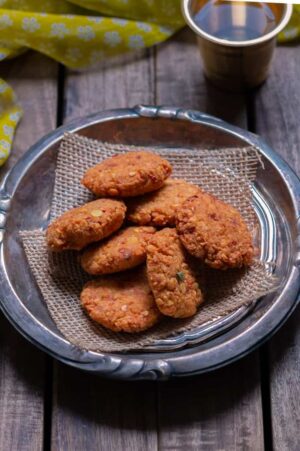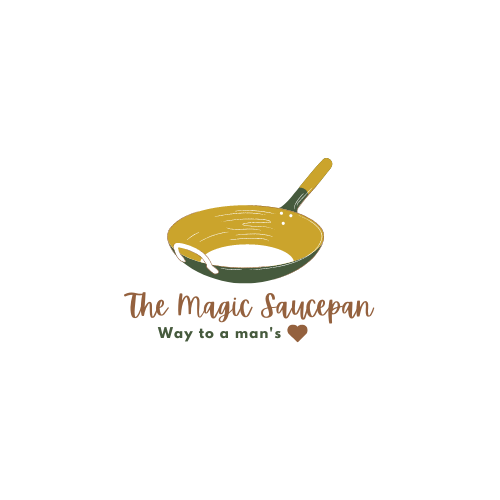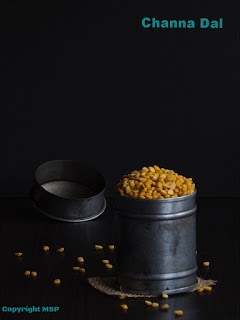Looking for traditional recipes to make for festive occasions? Festival Special, Aama Vadai also known as Paruppu vadai is a traditional South Indian Tamil snack. It is made with lentils - Channa dhal and Toor dhal and occasionally other lentils such as mung beans, urad dhal can also be added. This is a traditional family recipe.
Happy new year guys! The first post of 2018 is up. Well, when the whole world is closing doors on all the celebrations from the past couple of months, we Indians have one more to go before we take a break. Pongal (aka Makara Sankranti) is the festival of harvest for Indians. A day, in fact in South India, three days, to celebrate and give thanks to nature. So, for the next couple of weeks, you will be seeing a lot of recipes that are made during this festival.

Aama Vadai
I am starting with this traditional crispy fritter Vadai. Paruppu vadai as the name implies is made with lentils. Paruppu in Tamil means lentils and hence the name. Vadai is an ancient Tamil food that has been around 100-300 BC. It has been documented in the Sanskrit literature, Manasollasa in the early 12th century. The book - Food And Drinks In Ancient India: From Earliest Times To B.c. 1200 A.d. mentions Vatakas as balls prepared made from different pulses soaked in water and ground on a stone and fried in ghee or oil. Vataka is a name used for something that is round as discs. Through ages, this recipe has changed, adapted and evolved to the present one.
Other Varieties
Vadai is very famous in Tamil Nadu and it is a major snack item. A variation of vadai - Ulundu vadai is had as a breakfast in accompaniment with the popular south Indian breakfast Idli. We then have keerai vadai, masal vadai, which are consumed as snacks and of course, they are paired with tea. The difference is the type of lentils used in each variety. We also have rasam vadai, sambhar vadai and even thayir (yogurt) vadai, some of which have been there since ancient times.
Masal vadai is very similar to aama vadai but with loads of onions. While preparing food for religious occasions, we avoid using onions. So aama vadai is plain and simply devoid of flavour booster ingredients like onion or garlic or even fennel seeds. Apart from this, I would like to point out a major difference between the masal vadai and this aama vadai. The main ingredient for both the recipe is channa dhal. The main difference is that aama vadai is thicker and soft whereas the masal vadai is very thin and crispier. Thus making it more appetizing as a snack. I will post all the variations of vadai soon on the blog.
Aama vadai is quite simple to make and has no complicated procedure or rare ingredients. If your pantry is stocked with the basic Indian ingredients you are set to go. If you are a fan of falafel, I bet this will become your favourite too!

Crispy fritters made with three different lentils. This is a must during most of the Tamil Hindu festivals.
- ⅔ cup channa dhal | split bengal gram
- 3 tablespoon toor (tuvar) dhal | split yellow peas
- 1 green chilli (indian or thai variety) refer notes
- 2-3 dry red chillies
- ¼ teaspoon perungayam | asafoetiada powder exclude if you are gluten allergic
- Few curry leaves (fresh or dried)
- 1 tablespoon ghee
- Salt to taste
- Oil for deep frying
Soak the lentils in water for about 3 hours.
Rinse and drain the water completely. Add the dal, red and green chillies, curry leaves, and asafoetida. Pulse this mixture in a mixer 3-4 times. It should be a coarse paste. It is okay if one or two lentils remain whole.
Store the ground mixture in the refrigerator if you are not using it immediately.
When ready to fry, add salt and a tablespoon ghee to this mixture and mix well. Check for salt and adjust. Add ghee only before frying. This gives you a very crispy vada.
Divide the mixture into 12-13 balls equally.
Meanwhile, heat oil in a kadai for deep frying. Once it is hot, keep in medium flame.
Shape each ball into small discs like a patty, slightly less than ½ inch thickness.
Deep fry in a medium-high flame until it is golden brown on both sides. You can add more than two in a pan taking care not to overcrowd the pan. Leave enough space for the vadai to cook completely.
Serve them immediately. These are perfect tea time snacks.
- Grind the lentils coarsely. It is okay if some lentils remain as such. Do not add water unless it is difficult to grind. Sprinkle some if necessary.
- You can also reserve a tablespoon of soaked lentils and later add to the ground mixture. They give a nice texture and bite.
- You can also grind the mixture ahead and store them in the refrigerator. This helps in achieving even crispier vada. This is also a troubleshooting tip if the mixture becomes too moist or watery. Also, try adding rice flour to absorb the excess moisture. When you are storing it in the refrigerator, do not add salt or ghee. Add them just before frying.
- The green chillies in the recipe are the Indian variety. The best substitute for Indian chilly is the Thai chilly variety that is available in most supermarkets.
- The total amount of dal is 1 cup for this recipe. Make sure the channa dhal is more in proportion. The amount can be adjusted a little bit.
- Do not crowd the pan while frying. Otherwise, it will not turn crispy and may be undercooked.
Check out Whiskaffairs awesome sankaranti collections here

This post is a part of the Blogging marathon and this week's theme is Festival special.
Check out the Blogging Marathon page for the other Blogging Marathoners doing this BM#84




Sanjana Sajin says
Nice Rexipe. Loving it.
Pavani says
Absolutely delicious andsuch inviting vadai Nisha. You are tempting me to try them very soon 🙂
Chef Mireille says
what a lovely snack - perfect for parties or for any time
Padmajha PJ says
Such beautiful clicks. I don't know if I should gaze at the set up or drool over the vadas 🙂
Ruchi says
What a brilliant photography... Tempting vadas
themadscientiststskitchen says
Love the info you have given. Looks delicious and is great snack/side dish. Happy New Year to you.
Priya says
a great healthy and yummy snack. First I thought it as chana dal vada. but as u said it contains more onion. Loved this version of fritter
Nisha says
Hi Priya, yeah it is almost the same and these are slightly thicker and soft than masal vadas.
Jayashree says
Nicely made, the aama vadai name is new to name. Good to know that
Rafeeda - The Big Sweet Tooth says
They did look like the cousin of my favorite Masala Vada at the first sight and then loved the variation...I would definitely love this...
Harini says
Perfect for offering to the Lord!!
Dhwani says
Looks Scrumptious!!! Stunning Photography.
Afroz says
A prefect accompaniment for evening tea or company as well. The recipe looks very easy to follow 😀
Freda says
Looks scrumptious! Gorgeous photos 🙂
Sandhiya says
Addictive aama vadai, my all time favorite. You're tempting me with your pics. Looks so perfect and crispy!!!
Nivedita says
Not only the delicious vada recipe, I loved reading the history of Tamil food.
Though fry food is not my favourite, will Ake these as my kids love to eat.
Priya Suresh says
All time favourite, dangerously addictive aama vadai, feel like munching some rite now.
Seema says
Love the historical preview you have provided...
Vidya Narayan says
Fabulous images and loved the dish. Masala wadas are anyways my weakness.
Srivalli says
Very interesting read on the background of these vadais Nisha, enjoy your notes and the pictures too..Very happy New Year to you!
Vaishali says
Great read on the Vada , you have really gone into details . The vada looks nice and crisp and is a perfect munch with evening tea / coffee .